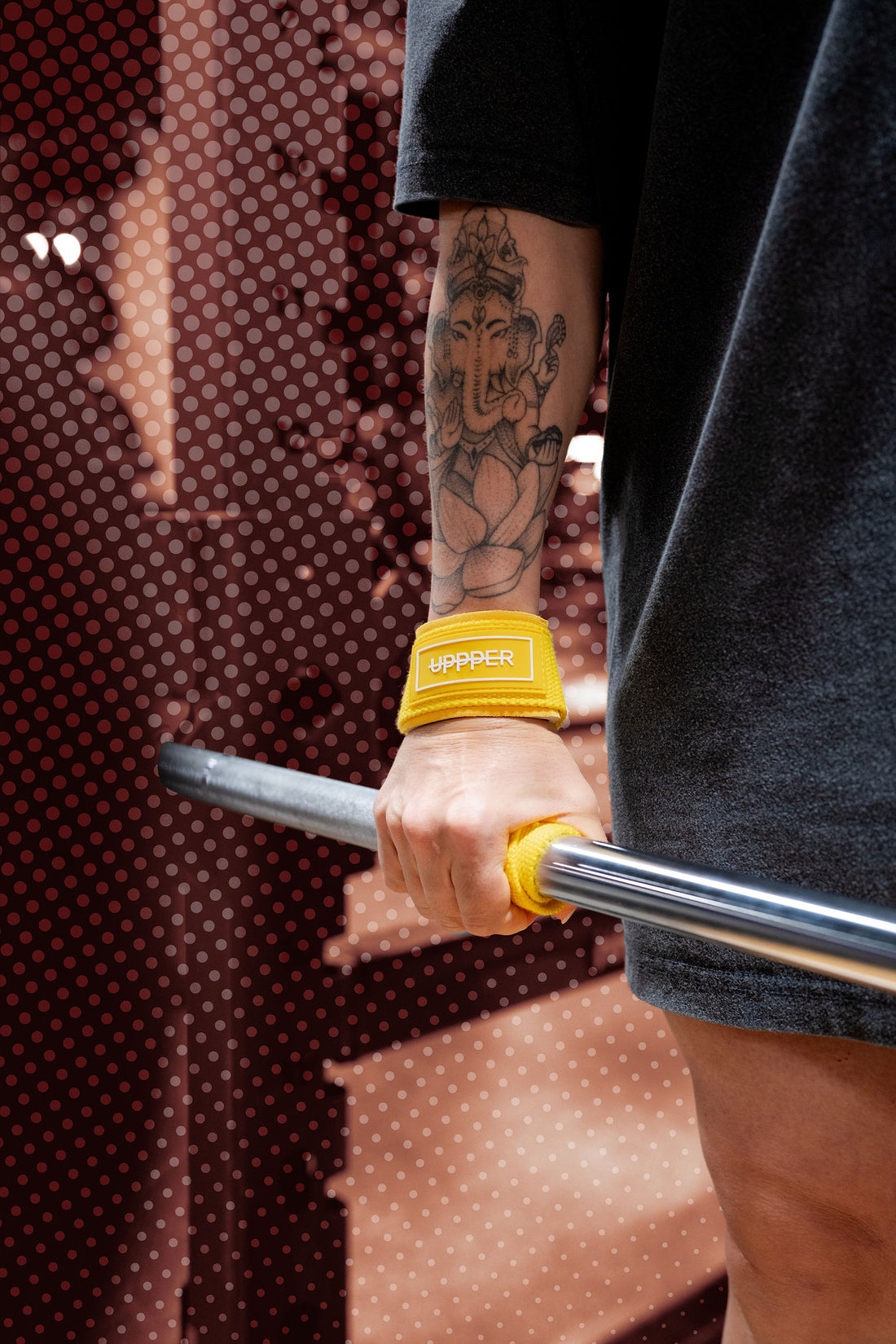If you've been wanting to take your deadlifts, rows, and other pulling exercises to the next level – lifting straps are a must!
At UPPPER, we have the best lifting straps for weightlifting... and we're not just saying that, they are highly-rated! They feature a lasso design to help secure your hand to any weight and reduce grip fatigue on the heaviest lifts. In turn, this helps you lift heavier for longer which leads to better results.
However, lifting straps can be tricky for anyone new to weightlifting. So, we've put together everything you need to know about lifting straps, what they are, when to use them, and how to use them.
Keep on reading to get all the details, but for those just wanting to see how to secure your wrist straps to the weight, you can scroll down to our instructional TikTok!
What are lifting straps?
As the name suggests, lifting straps are strap accessories that help you lift heavy weights with more control. They are attached to your wrist on one end and to the barbell or dumbbell on the other, which is why they’re also known as wrist straps or deadlift straps (not to be confused with wrist wraps).
They are designed to give you more control over the weight that’s being lifted by supporting your wrists, keeping the weight from rolling out of your hand, and reducing grip fatigue. Because of this, they are usually made out of strong and durable materials such as leather, canvas, or nylon.
Use wrist strap for lifting to:
- Reduce grip fatigue
- Keep the weight in your hands
- Have better control throughout your set
- Focus more on muscle performance and form
- Perform more reps
- Lift heavier weights
When should you use lifting straps?
Lifting straps are there to help you get through heavy lifting exercises, specifically pulling exercises, meaning that you don’t need to add them to every single lifting exercise in your routine.
Some of the exercises where lifting straps can be beneficial are:
- Deadlifts and other deadlift variations
- Dumbbell lunges
- Bent-over barbell rows and other row variations
- Shrugs
- Rack pulls
However, you shouldn't use them for every single set. Use the for only your heaviest sets, the sets you need a little extra grip support to help you fully exhaust your muscles. Grip strength is important so you should still focus on improving your grip, and only using wrist straps when you need them the most.
How to use lifting straps
There are various types of lifting straps, but we're focusing on UPPPER Weightlifting Straps so we'll be giving you written and video instructions on how to use lasso straps.
@upppergear Have you tried our Lifting Straps?
♬ Drake style/HIPHOP beat(1491552) - Burning Man
- Place the loose end through the loop on the other end of the strap to create a bigger loop, then put your hand through said loop.
- Secure the loop around your wrist by tightening the strap, making sure it’s resting comfortably against the lower part of the back of your hand.
- Place the strap in a way that the loose end that’s sticking out is on the palm of your hand, pointing between your index and thumb. If it’s pointing the opposite way, redo the initial loop the other way around.
- Wrap the loose end of the strap around the barbell or dumbbell by tightly looping it underneath and around the bar.
- Twist the barbell or dumbbell towards you to finish tightening it until you feel it completely secured in your hand.
Start leveling up your leg and back days with UPPPER Lifting Straps


